Review and improve your UX on mobile using the Smart Insights RACE Planning Framework
Should we be focusing our mobile marketing activities on the device, or the consumer?
Allow me to rewind the clock, briefly, and explain why this matters:
Back in 2004, when I got started in mobile, our expectations about a great mobile customer experience were blinkered by the capabilities of the handset. Nokia dominated the handset market, with 9 of the top 10 best selling handsets that year - some came with a colour display, most provided polyphonic ringtones, (very) basic games, and desktop tools. But no camera, no Bluetooth.
The ‘mobile internet’ was a tedious affair delivered on a smaller screen, accessed via an even smaller keypad, over patchy 3G coverage, using WAP (‘Wireless Application Protocol’, or ‘WAP is crap’ for short). Hats off to the brands that tackled mobile then - usually focussing on smart uses of SMS and location-based marketing - and made the most of a technically challenging mobile world.
Fast forward to 2007: Steve Jobs launches the first iPhone and transforms the whole game. Massive full colour touchscreen, only one ‘button’, triggering a revolution in internet browsing on the mobile, and the launch of the now ubiquitous native app. Intuitive, quick and easy customer experience takes centre stage.
Excuse the trip down memory lane. Here’s the point. Today’s mobile device – whether a tablet, smartphone, hybrid or watch – empowers us to control so many parts of our lives, day and night. A minority of brands provide an exceptional customer experience – using predictive analytics to deliver automated, opted-in, highly targeted, personalised, time and location sensitive content which improves our lives.
So our expectations of the customer experiences we should get from all brands are set sky high. But in reality, the vast majority of brands still fall far short of delivering flawless experiences across the customer journey.
RACE Planning Framework to improve your mobile marketing
I’m using the Smart Insights RACE Planning model to point out areas for improvement at each stage of the customer lifecycle as a business or brand uses mobile to get closer to its audience.
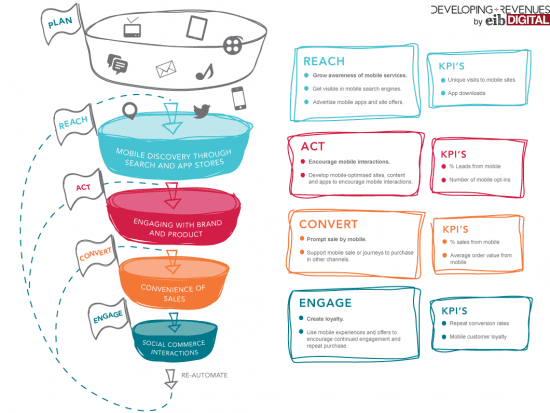
Source: Smart Insights | Burn The Sky
Reach stage
Among the many ways to deliver reach and drive awareness for your mobile target audience – including display ads on other sites and apps, SMS calls to action on traditional media, social channels - let’s look at search.
Search is absolutely critical to the first phase of your mobile customer journey. Two ‘tipping point moments’ are worth noting. First, Google estimates that 50% of mobile experiences start with search, either through typing, through visual recognition (e.g. Google Goggles) or audio recognition (e.g. Google voice search, Apple Siri). Very quick, very easy.
Audio Search..
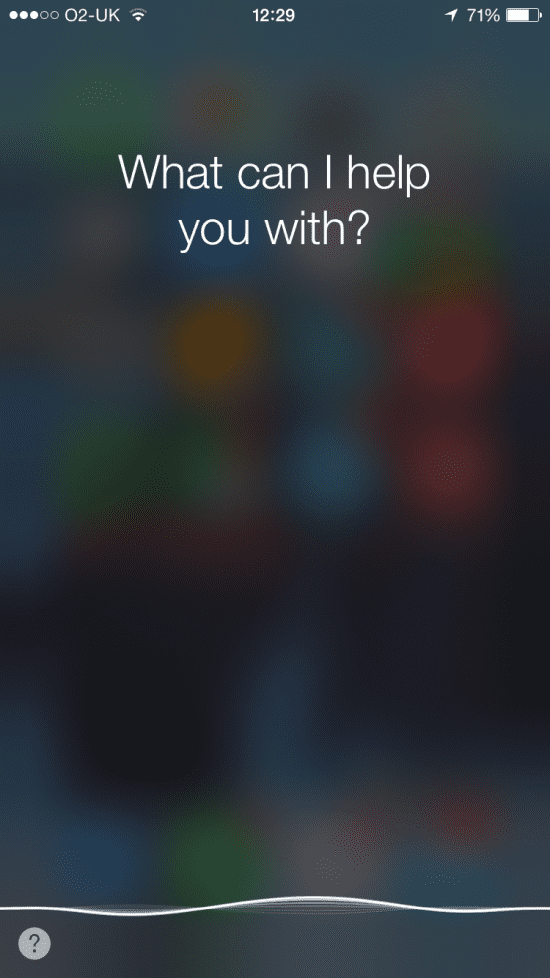
Hands free remote control
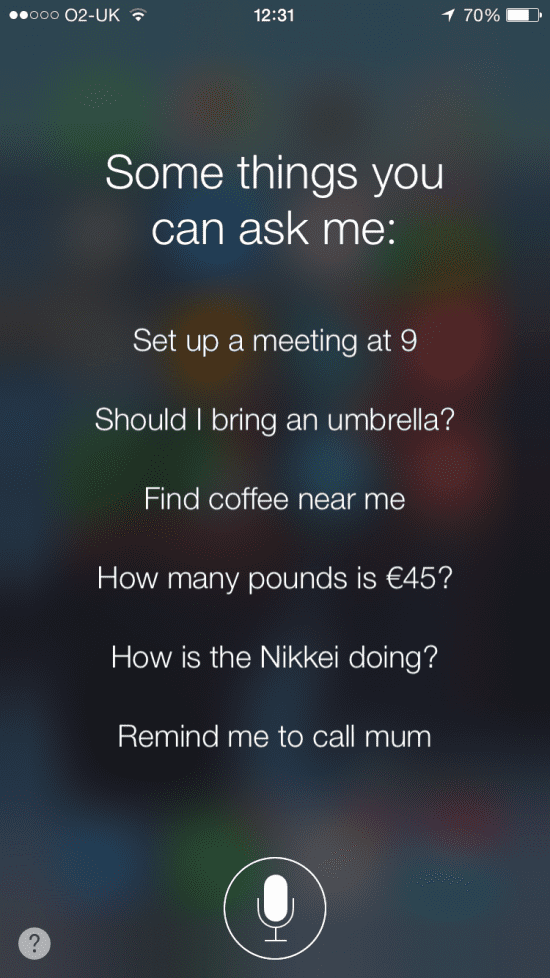
For some time now, Google has been displaying a 'Google box' at the top of search results that highlights what Google believes to be the best results for your search, or the best answer to your question. Now, the Google box will also display a carousel of news results that can be scrolled sideways to see the latest news on whatever topic you searched.
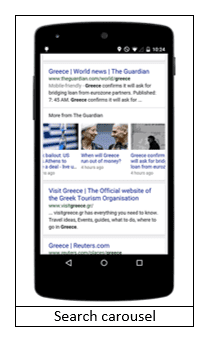
Second, industry estimates predict the majority of spend, organic traffic and paid clicks from smartphones and tablets will surpass traditional desktop/laptop search activity in 2015. This is where brands should take full advantage to improve the customer experience.
Try testing all Google’s Adword extensions. Since posting this Smart Insights blog with tips on maximizing your returns from paid search we’re seeing retail, travel and utility businesses see conversion rates surge by +40% with click to call and site link extensions.
There's also the latest developments in mobile SEO with Google labelling sites mobile-friendly and threatening to reduce the ranking of those that aren't in mobile from the 21st of April.
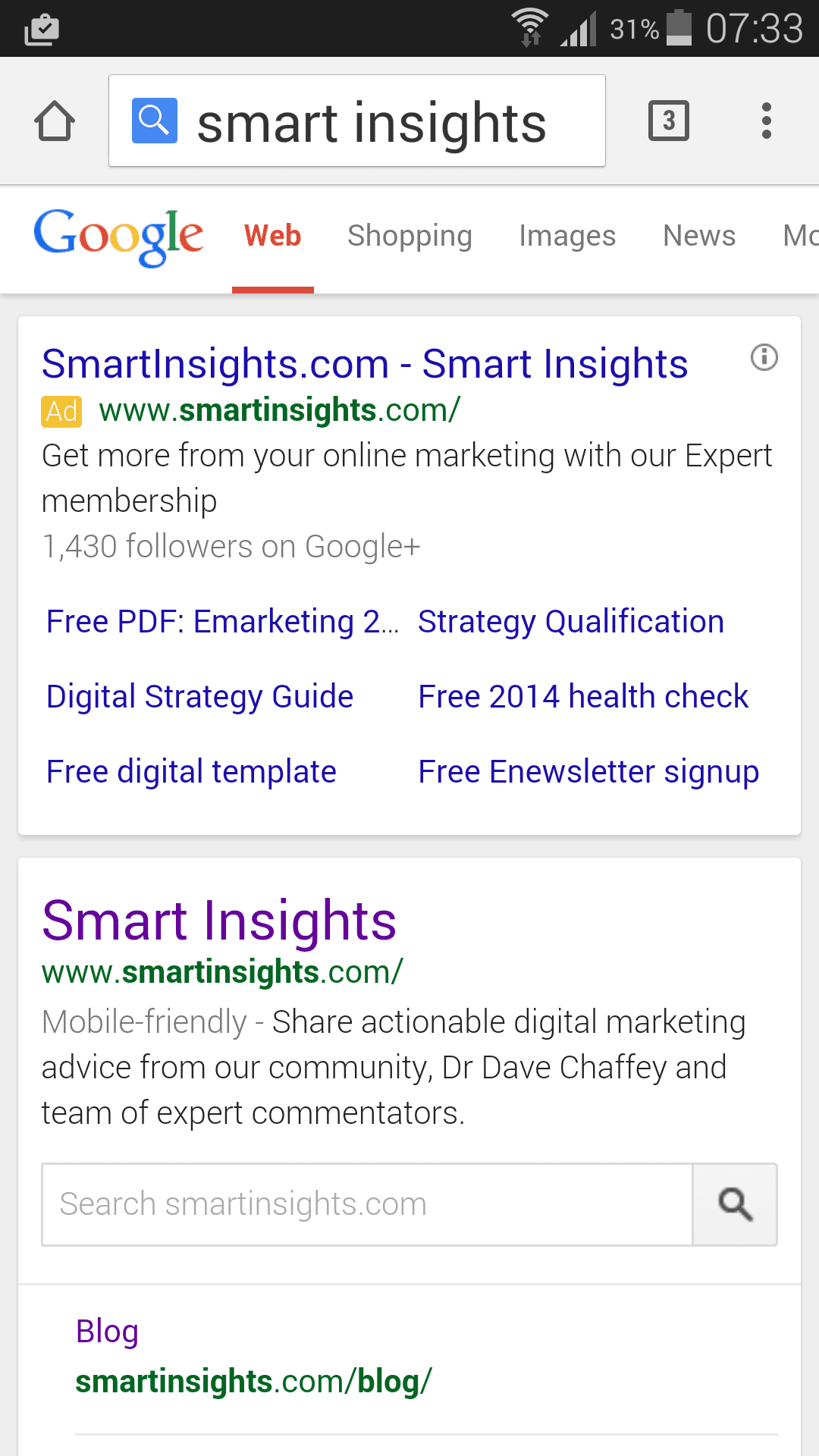
Act stage
Speaking honestly, the most advanced media companies, gaming operators and omnichannel retailers admit that their customer journeys are not 'joined up'. Are you directing your search traffic to mobile-optimized landing pages, with continuity in the offer type, price point, tone of voice, time and location of the search event? Do your emails and affiliate promotion follow this pattern?
Once on your site, mobile users in 'fight or flight' mode. If the page loads in 3 – 4 seconds, provides a thumb friendly welcome which is easy to view and navigate, game on. If not, your mobile customers are likely to close the browser and seek a path of less resistance. Like a mobile friendly competitor. On average, mobile site bounce rates still exceed 70%.
Slick navigation and fast page load times are rewarded with conversion – both on site, and in-app. Think about all the ingredients to ensure they’re getting exactly what they’re seeking.
John Lewis mobile marketing
John Lewis estimates 30% of mobiles users with a poor first time site experience will never return. It's uncluttered site is quick and easy to navigate, focuses on clear product shots and prices, and prominent ratings and reviews.

John Lewis Price Match
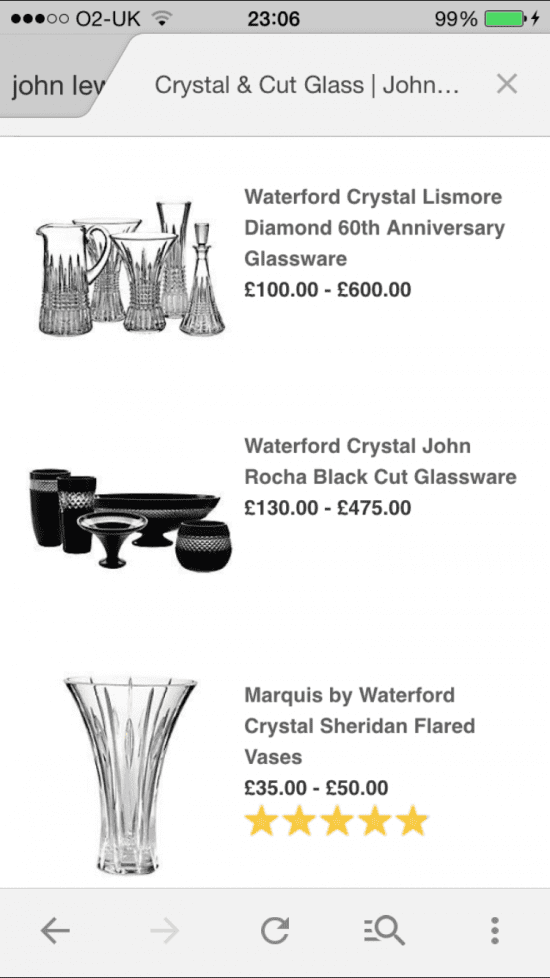
John Lewis Ratings and Review

Convert
Talk to leading mobile payments specialists or retailers and you’ll hear the same stats. Over 90% of mobile transactions fail in the check out area.
Having reviewed over 20 retailer mobile sites in the past 9 months, the check out pages are almost always the weakest link on the journey. Why?
I’d argue there are two main reasons. Either the check out process includes too many stages, which allows more likelihood of poor connectivity to curtail the process. And / or the on-screen navigation is not clear.
Leovegas.com mobile strategy
Leading players in the gambling sector are setting the standard here. The check out section of www.leovegas.com is worth a look as registration, deposit and bonus taking are all very well executed. It’s easy to see where I am in the process, with on-screen guidance on password requirements (show and hide option is really helpful), plus post code lookup to save inputting full address details. The 200% welcome bonus is added to my deposit immediately.
Clear, easy reg. process with show / hide password feature
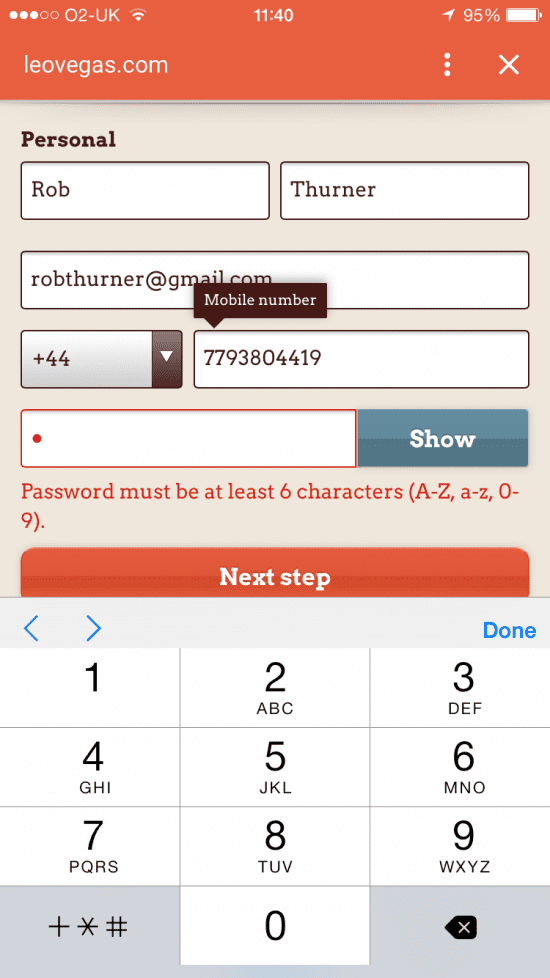
Verification via SMS code, post code look up
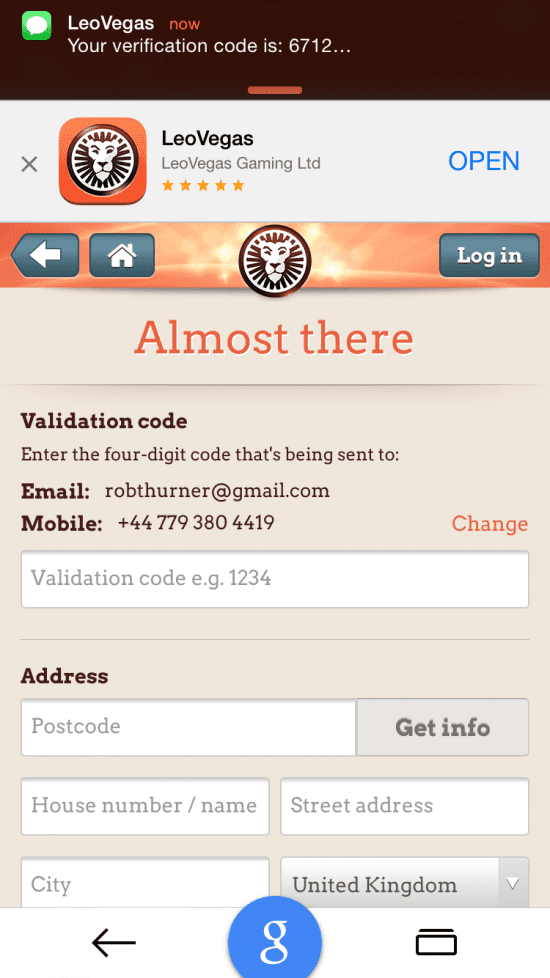
Prominent welcome message with free spins offer
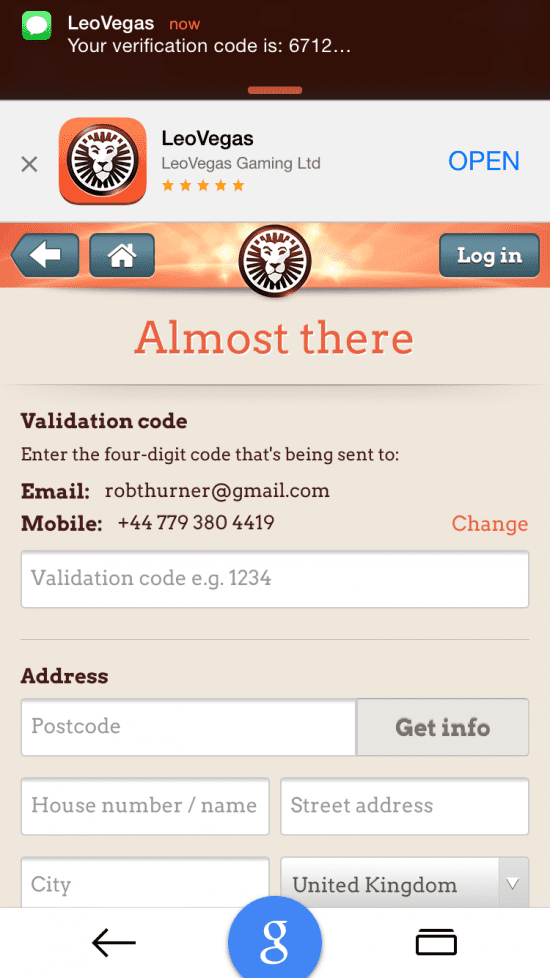
Selfridges, which launched its new mobile site in Q4 2014 ahead of peak trading, devoted the majority of development time and resource to the check out.
3 steps for mobile navigation
Whether you’re a new shopper registering the usual personal details or an existing customer logging in with email and password details, 'Your secure checkout' is very clearly navigated with three easy steps – numbered for easy navigation.
- Step 1 - Delivery: Simply add your delivery address, which offers post code look up and a drop down list where you will find your house. If like me you weren’t too keen on the £4.95 delivery charge, go for click and collect. There you’ll find Selfridges’ easy to order but equally steep gift wrap service with a personalised message.
- Step 2 – Payment: Quick and easy payment options. I see the usual suspects – Visa, Mastercard, PayPal listed.
- Step 3 - Order confirmation: Again, quick and easy.
Engage
Whilst the majority of time and effort is devoted to the first three phases of the customer journey, I’d argue that the biggest prize awaits the brands figuring out the smartest loyalty programmes.
With few exceptions, this area presents the greatest challenges for businesses, underpinned by the same problems:
- No comprehensive view of the customer relationship across all platforms (mobile, digital, offline).
- Inconsistent analytics and lack of detailed customer insight.
- Fragmentation of the business into silos so no owner of the customer relationship.
- Key elements of data missing to enable real-time trigger based marketing.
The common element that crops up consistently is a lack of co-ordinated data strategy – in particular the development of a single view of the customer relationship.
Get it right, and the rewards in developing and fine-tuning loyalty programmes are clear. We often default to the pure-play digital giants as examples of best practice. I find it quicker and easier to buy from Amazon’s 1-click app as the products recommended, the in-app navigation, access to reviews, and delivery process and feedback loop exceeds the customer experience I get on any other device.
Is that the signpost to the promised land, or the hallmark of all customer-facing brands, whatever the handsets being used?
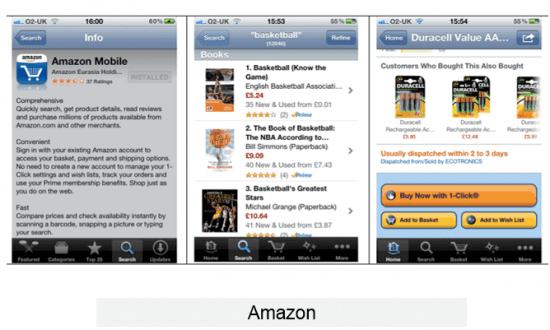
Key takeaways on mobile optimisation
- A small number of businesses delivering exceptional mobile customer experience drives high expectations of all businesses.
- Use enhanced mobile search tools to harness the mass migration from PC/laptop to smartphone/tablet search.
- Ensure continuity and consistency of search activity on landing pages.
- Design slick navigation and fast page load times to achieve higher conversion.
- Develop a frictionless mobile check out process to reduce cart abandonment.
- Invest in a clearly defined data strategy to deliver a single view of the customer relationship.
We’d welcome your feedback on this post. For an assessment on your mobile customer experience, email me - [email protected]


















